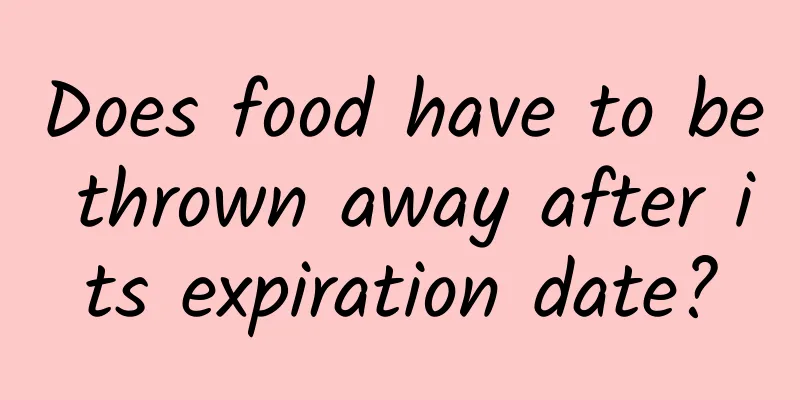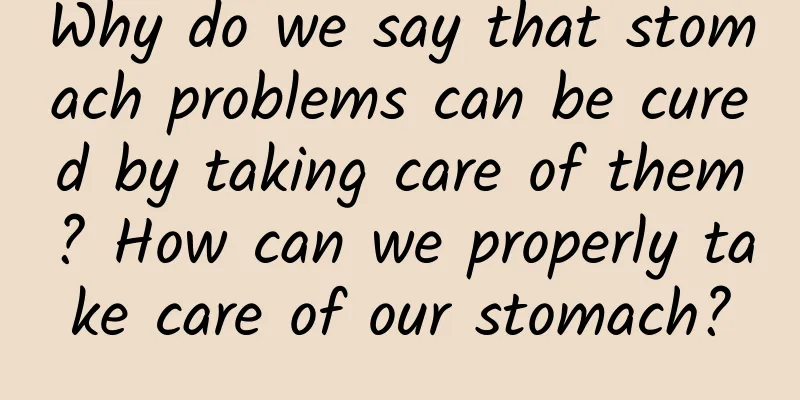Does food have to be thrown away after its expiration date?

|
**When buying food, the shelf life is something that almost everyone cares about. However, many consumers are not clear about what the shelf life means and whether it is the "gold standard" for measuring spoilage. Therefore, many people have troubles such as "it's a pity to throw it away after it expires, but I'm afraid of getting sick if I don't throw it away." **On March 27, the National Health Commission and the State Administration for Market Regulation issued 50 national food safety standards and 9 standard amendments, including the new "shelf life expiration date" and "consumer storage period" standards. What impact will the addition of these two standards have on consumers? Can food still be eaten if it is one or two days past its expiration date? Is food safe within its shelf life? Life Times invites experts to explain and clarify several major misunderstandings about shelf life. Experts interviewed Fan Zhihong, Professor of the College of Food Science and Nutritional Engineering, China Agricultural University Where does the term “shelf life” come from? Many people tend to equate the shelf life with the expiration date of food. In fact, this simplistic and crude understanding is not correct. Professor Fan Zhihong explained that the significance of setting a shelf life for food is, on the one hand, to remind sellers and consumers that after the food is stored for longer than the shelf life, there may be a risk of quality degradation, deterioration, or even corruption; on the other hand, it is also used to define the food safety responsibilities of all parties.
Most pre-packaged foods need to be labeled with a shelf life , which is determined by the manufacturer based on shelf life experiments and in accordance with industry practices. Pre-packaged foods are foods that are pre-packaged or made in packaging materials and containers. Fresh agricultural products such as fresh vegetables, fruits, meat, fish, eggs, etc. are not pre-packaged foods. Bulk foods such as bulk grains, as well as restaurant food, street snacks, freshly made dumplings and other foods that are made and sold on the spot, are not pre-packaged foods and are not required to be labeled with a shelf life. The shelf life of these foods needs to be judged by yourself based on life experience. Among them, catering foods are best eaten immediately after purchase, otherwise they should be frozen in time. New standards make food labeling more efficient The country has newly issued the "General Rules for Pre-packaged Food Labeling" (GB7718-2025) and the "General Rules for Nutrition Labeling of Pre-packaged Foods" (GB28050-2025) to "upgrade" food labeling. The main changes are as follows: 1. Adjust the shelf life to "shelf life expiration date" Through this label, everyone can directly find out when the food expires, without having to calculate it based on the production date and shelf life. 2. Standardized the shelf life labeling format The information is clearly marked in the order of year, month and day, making it more intuitive. 3. To reduce waste, encourage labeling of “consumption shelf life” If consumers do not finish eating the food they purchase within the shelf life, they can choose to continue eating it within the "consumer shelf life", provided that the food is stored in accordance with the storage conditions indicated on the label. Clarify 4 "shelf life" misunderstandings Thousands of years ago, the ancients discovered that when food is dried to a certain degree, or when there is enough "natural preservatives" such as salt and sugar in the food, microorganisms will not be able to proliferate and corruption will not occur. Here are some common misunderstandings: Myth 1: All foods must have a shelf life. Food spoilage is caused by the proliferation of microorganisms, while the appearance of "rancid smell", "old oil smell" and "wormwood smell" in food is related to fat oxidation. If these two problems do not exist, food can be stored for a long time. Foods such as liquor, salt, sugar, and honey have natural antibacterial properties due to their high alcohol, salt, and sugar content, and there is no problem of fat oxidation. Therefore, they can be stored for many years without the need to label a shelf life. Myth 2: The longer the shelf life, the more preservatives are needed. The shelf life of food is related to the characteristics of the food itself, the production process and the storage conditions. Traditional methods such as drying (removing moisture), salting, sugaring and low temperature are all ways to achieve long-term food preservation. For example, it has been discovered in ancient times that dried foods such as dried meat, dried fish, dried vegetables, dried fruits, as well as foods with high enough salt content such as salted fish, bacon, pickles, and fermented bean curd can be stored at room temperature for more than a year without spoiling, without the need to add preservatives. Through high temperature sterilization and aseptic filling technology, all microorganisms inside the package are killed, while ensuring that microorganisms outside the package cannot enter, which can also greatly extend the shelf life of food. Canned food, soft canned food and other products are produced using this principle. In addition, low-temperature quick freezing and storage under freezing conditions below -18°C can also prevent the proliferation and toxin production of microorganisms, extending the shelf life of food to one year or even longer. Myth 3: Throw away food after expiration Generally speaking , food manufacturers set a certain margin for expiration dates. Especially for foods with a long shelf life, it is common for food to not spoil after the expiration date marked on the packaging. If it is thrown away easily, it will cause serious food waste. Whether it can be eaten at this time requires consumers to judge based on their life experience. If the flavor, color, taste, etc. have not changed, it can still be eaten safely. For example, if a can has a shelf life of two years and has been kept at home for two months, you can eat it if the can shell is not swollen, if you smell it after opening it and if the taste and texture are the same, then you can eat it. Although the vitamin content will decrease over time and the flavor will not be as good as when it was first produced, eating it will not cause food safety issues. For example, if the rice, millet, beans, etc. bought at home have been stored for more than a year and have not been damp, moldy, or infested with insects, there is no safety risk in continuing to eat them. However, the aroma is not as good as the newly produced grains of the year, and the taste value has decreased. Whether to eat them at this time depends on your own judgment. Myth 4: As long as it is within the shelf life, it is safe Many people only look at the shelf life but do not pay attention to the shelf life conditions. For example, a pasteurized milk product that is marked as needing to be refrigerated at 2-6°C may go bad prematurely if it is not stored in accordance with refrigeration conditions and is left at room temperature for a day or even a few hours. Therefore, we remind everyone to pay attention to the storage conditions on the food packaging, such as "refrigerated", "store in a cool place", "avoid moisture", etc. For foods that have been sterilized or disinfected and then sealed, the shelf life label only guarantees the storage time before opening. After opening, food comes into contact with microorganisms in the air and cannot be stored at room temperature for a long time. For example, the packaging of seasoning sauces such as ketchup, soybean sauce, and mushroom sauce often has the words "Please refrigerate after opening". Source: Huanqiu.com |
>>: Can vegetable drinks really help you lose weight and detoxify? Here comes the truth
Recommend
Path has more than 10 million users, and the private social market is expanding
On the morning of April 30th, Beijing time, Dave ...
What is a solid breast mass?
There are still many cases of breast diseases in ...
For diabetes, which one is more feared, high blood sugar or low blood sugar?
As people's living standards improve, the num...
Can first degree cervical erosion heal on its own?
Once women suffer from cervical erosion, they sho...
What to do with the wound after bathing after cesarean section
For the sake of their own cleanliness, women stil...
Why does my chest hurt when I touch it?
In daily life, female friends must pay attention ...
Is it normal for leucorrhea to be white and paste-like?
Women will undoubtedly encounter such a thing in ...
[Medical Q&A] Will anger cause your blood pressure to soar?
Planner: Chinese Medical Association Reviewer: Fa...
How to get back in shape after giving birth
Many female friends find it difficult to accept t...
What kind of rice is best for egg fried rice?
We all know that there are many ways to make egg ...
Why do the most upright people achieve nothing? Is there anything wrong with being too upright?
Why does a person who is too upright achieve noth...
When is the safe period for girls?
When is the safe period? Except for the menstrual...
Seven months pregnant
Numbness in the hands is a very common symptom af...
What is the cause of cervical hypertrophy?
The cervical hypertrophy type harms the health of...









